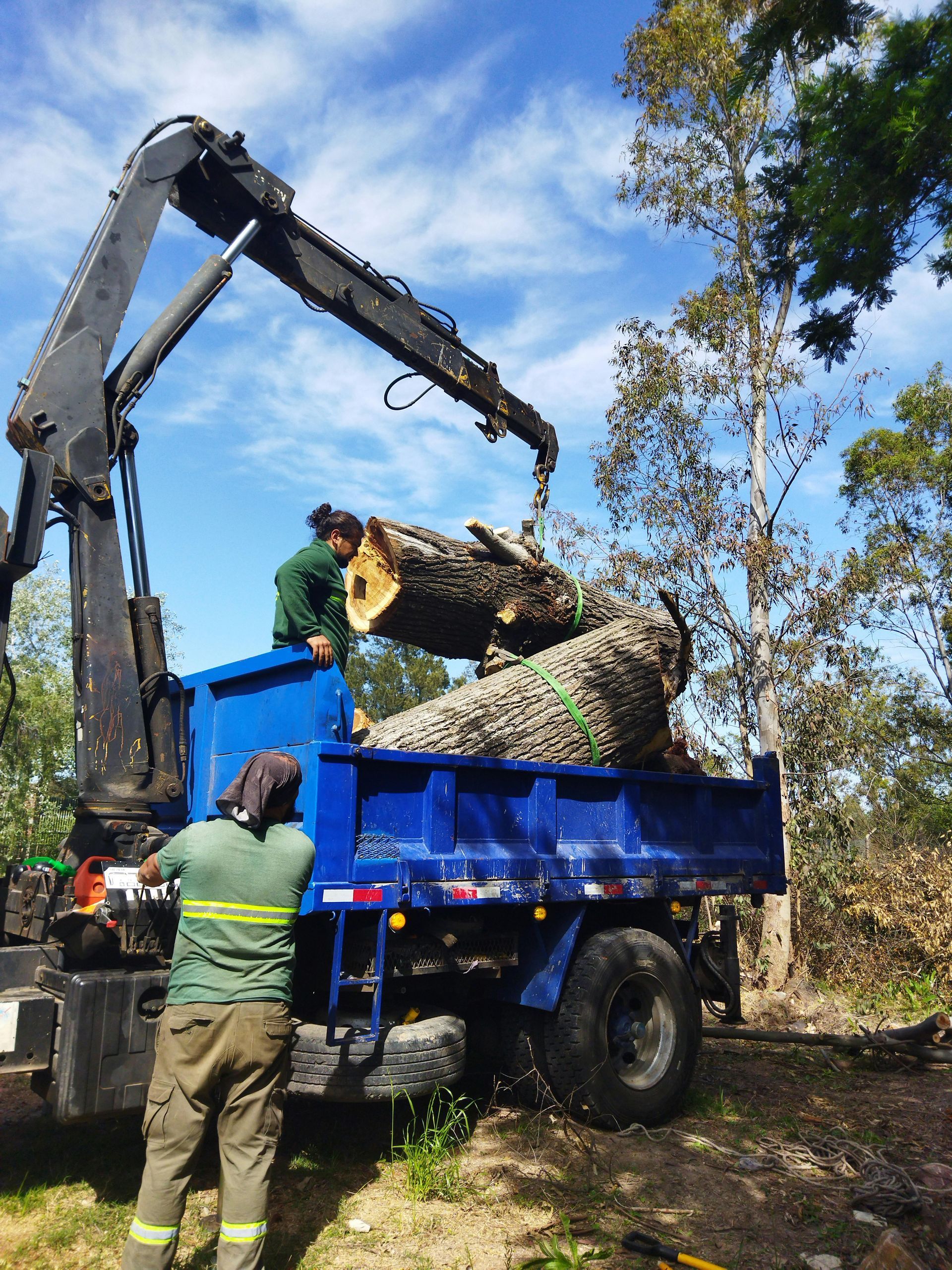Is My Tree Dead? A Guide to Identifying a Lost Cause
Trees are a beautiful and valuable part of any landscape. They provide shade, enhance curb appeal, and connect us with nature. So, when a beloved tree starts to look unhealthy, it's natural to feel concerned. Is it just going through a rough patch, or is it truly dead? Making the wrong call can be risky, as a dead tree can become a serious safety hazard.
Knowing what to look for is the first step in making an informed decision. At Aurora Tree Service, we believe in empowering homeowners with the knowledge to care for their trees. We're not just here to remove them; we're here to help you understand their health and preserve them whenever possible. This guide will walk you through the key signs of a dead tree and explain how our expert arborists can provide a definitive assessment.
Why Identifying a Dead Tree Matters
It might be tempting to take a "wait and see" approach with a tree that looks unwell. However, delaying an assessment can lead to significant problems. A dead tree has lost its structural integrity. Its root system is no longer anchoring it firmly in the ground, and its branches become dry and brittle.
This creates a high-risk situation. Dead trees are unpredictable and can fall at any moment, especially during a storm or high winds. A falling tree can cause catastrophic damage to your home, vehicles, or power lines, and poses a grave danger to people. Identifying and addressing a dead tree is not just about aesthetics; it's a critical safety measure for your property and family.
The Scratch Test: A Simple First Look
Before you start looking for more complex signs, there's one simple test you can perform yourself. It’s called the scratch test, and it gives you a quick look at what’s happening just beneath the bark.
Using your fingernail or a small pocketknife, carefully scratch a small section of bark on a few different branches. A healthy tree will reveal a vibrant, moist, green layer just underneath. This layer, called the cambium, is alive and transporting nutrients. If you scratch the bark and find a dry, brown, or brittle layer underneath, it's a strong indicator that the branch—and possibly the entire tree—is dead.
5 Telltale Signs Your Tree May Be Dead
While the scratch test is a good starting point, a comprehensive diagnosis involves looking for several other clues. Our certified arborists at Aurora Tree Service look for a combination of these signs to make an accurate assessment.
1. No Leaves or Buds in Spring
One of the most obvious signs of a dead tree is a lack of leaves during the growing season. While deciduous trees lose their leaves in the fall, they should produce new buds and leaves in the spring. If your tree remains bare while others around it are green and full, it's a major red flag.
Pay attention to timing. Some trees, like oaks, leaf out later than others. However, if late spring arrives and your tree shows no signs of life, it likely has a serious problem. A tree that only produces leaves on a few scattered branches may be in severe decline and dying, even if it's not completely dead yet.
2. Dry, Brittle Branches and Bark
Healthy tree branches are flexible. They can bend with the wind without snapping. On a dead tree, the branches lose all their moisture and become extremely brittle. If you can easily snap small branches and twigs with your hands and they break with a dry crack, it signifies death.
Similarly, check the bark. As a tree dies, the bark will become loose and start to peel away or fall off in large chunks, revealing the smooth wood underneath. While some healthy trees like birches and sycamores naturally shed their bark, excessive or unusual bark loss on other species is a clear sign of decay.
3. Fungal Growth on the Trunk
The presence of fungi, such as mushrooms or conks, growing on the trunk or around the base of a tree is a significant indicator of internal decay. Fungi are decomposers, and their job is to break down dead organic material. If they are colonizing your tree, it means there is a substantial amount of dead wood for them to feed on.
While some fungi might appear on a living tree, extensive growth, especially of shelf fungi, often signals that the tree's core structure is compromised and rotting from the inside out. This makes the tree extremely unstable and hazardous.
4. Cracks in the Trunk and Major Limbs
Deep, vertical cracks in the trunk are a serious symptom. These cracks, also known as "frost cracks" or "sunscald," can expose the inner wood to pests and diseases, accelerating decay. While a healthy tree might be able to heal over a small crack, large or numerous splits suggest the tree is structurally unsound.
If you see these cracks combined with other signs, like fungal growth or dead branches, the tree's health is in critical condition.
5. A Leaning or Damaged Trunk Base
A sudden lean that wasn't there before is an emergency sign. It often indicates root failure or a compromised base. Inspect the ground around the trunk. Are there signs of heaving soil? Can you see major roots that are dead or severed?
Damage at the base of the trunk from lawnmowers, pests, or disease can also be fatal. This area is vital for transporting water and nutrients. If it is severely damaged, the tree cannot support itself, even if the upper branches still appear to have some life.
When to Call the Professionals at Aurora Tree Service
While you can spot many of these signs yourself, a definitive diagnosis requires a trained eye. A professional arborist can distinguish between a tree that is dead and one that is merely sick or dormant and could be saved.
At Aurora Tree Service, our approach is always to preserve healthy trees first. We don’t jump to conclusions. Our expert assessment process includes:
- Thorough Visual Inspection: We examine the tree from its roots to its crown, looking for all the signs mentioned above and more subtle clues that a homeowner might miss.
- Disease and Pest Diagnosis: We can identify specific diseases or insect infestations that may be harming your tree. In some cases, targeted treatments can nurse a sick tree back to health.
- Structural Risk Assessment: We evaluate the tree’s stability and determine if it poses an immediate threat to your property. We can tell you if any large limbs are at risk of falling or if the entire tree needs to be removed for safety.
- Honest, Clear Recommendations: After our assessment, we provide you with a clear explanation of our findings. If the tree can be saved through pruning, treatment, or cabling, we will recommend that course of action. If removal is the only safe option, we will explain exactly why.
Your Partner in Tree Health and Safety
Losing a tree is never ideal, but ignoring a dead one is a risk you can’t afford to take. Understanding the signs of a dead tree empowers you to act quickly and protect your home and loved ones.
If you suspect a tree on your property is dead or dying, don't guess. Let the certified arborists at Aurora Tree Service provide you with a professional, honest evaluation. We are committed to ensuring the safety and beauty of your landscape, whether that means saving a struggling tree or removing a hazardous one.
Contact Aurora Tree Service today for a comprehensive tree health assessment. Let us give you the peace of mind that comes with knowing your trees are safe and healthy.
Meta Title: Is My Tree Dead? 5 Signs to Look For | Aurora Tree Service
Meta Description: Learn how to tell if your tree is dead with this guide from Aurora Tree Service. We cover key signs like brittle branches, lack of leaves, and what to do next.



